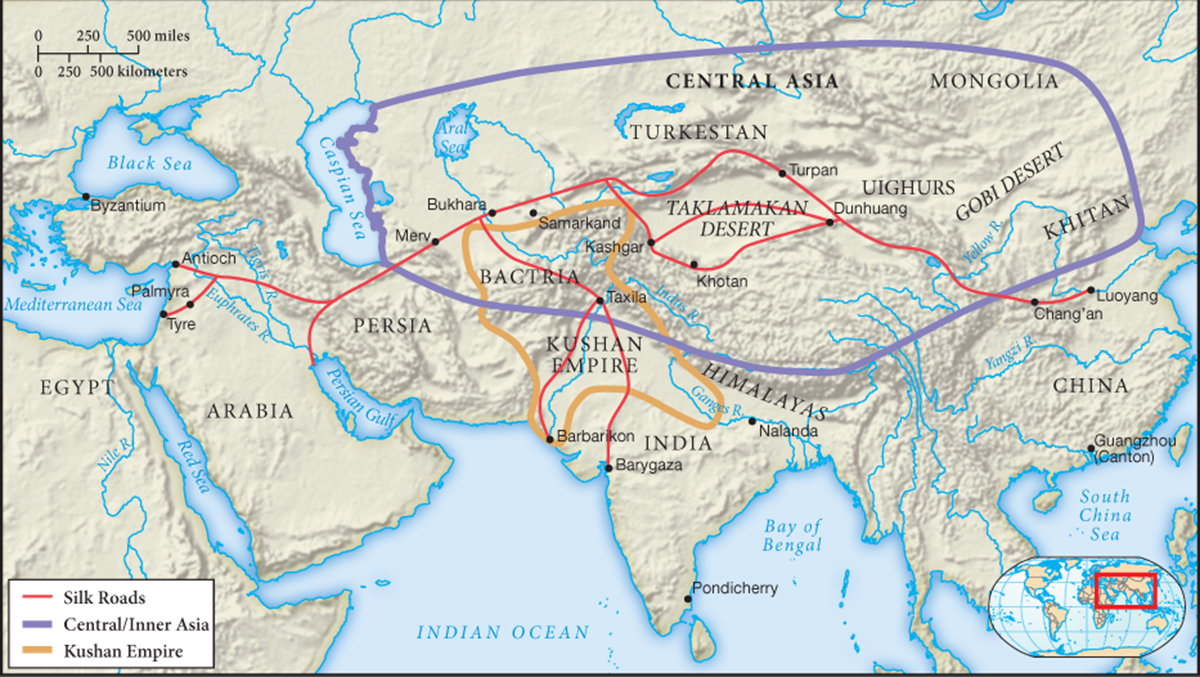Ways of the World with Sources
Printed Page 284
Ways of the World
Printed Page 244
Chapter Timeline
The Eurasian landmass has long been home to the majority of humankind as well as to the world’s most productive agriculture, largest civilizations, and greatest concentration of pastoral peoples. Beyond its many separate societies and cultures, Eurasia also gave rise to one of the world’s most extensive and sustained networks of exchange among its diverse peoples. Known as the Silk Roads, a reference to their most famous product, these land-based trade routes linked pastoral and agricultural peoples as well as the large civilizations on the continent’s outer rim (see Map 7.1). None of its numerous participants knew the full extent of this network’s reach, for it was largely a “relay trade” in which goods were passed down the line, changing hands many times before reaching their final destination. Nonetheless, the Silk Roads provide a certain unity and coherence to Eurasian history alongside the distinct stories of its separate civilizations and peoples.

Map 7.1 The Silk Roads For 2,000 years, goods, ideas, technologies, and diseases made their way across Eurasia on the several routes of the Silk Roads.
